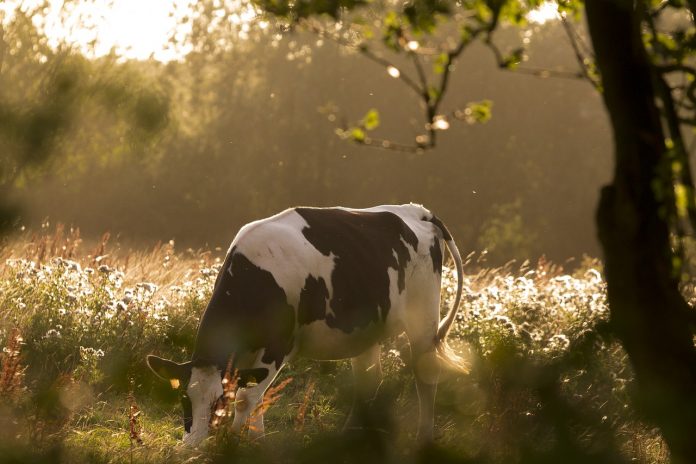UNIVERSITY PARK, Pa. — Climate change will not significantly impair animal agriculture in the Northeast region of the United States, according to a multidisciplinary team of researchers, who point out there are many variables in the future scenario they envision.
Warming up
Although a projected increase in hot days will cause more heat stress in dairy cows and economic challenges for the equine industry, some animal agricultural endeavors in the Northeast may actually benefit from warming, predicted lead researcher Alex Hristov, professor of dairy nutrition at Penn State.
Warmer conditions could result in poultry producers incurring lower energy costs for heating chicken housing fall through spring.
Researchers also suggest a warmer, wetter environment could boost the ability of beef cattle producers to grow and provide forage for their animals.
Researchers noted that climate models for the Northeast predict, on average, more warm days exceeding 77 degrees; more extremely warm nights, with minimum temperature above 70 degrees; fewer extremely cold nights, temperatures below 32 degrees; warmer average winter and summer temperatures; more days with heavy rain exceeding two to three inches; and higher annual precipitation.
“Increased temperatures will alter the forage growing season timing and extend its length; however, changes in relative humidity — which can exacerbate summer heat stress in dairy cattle — are expected to be minimal through the current century,” Hristov said.
Research
“We are confident that we know what is going to happen. The new, down-scaled climate models portray the evolution of current trends in the Northeast through the 21st century.”
The research, which was published recently in Climatic Change, analyzed the coming impacts of warmer, wetter conditions in the Northeast on forage production and quality; manure management; emerging pathogens and disease; the production of dairy cattle, beef cattle and poultry; and equine enterprises.
Forage
For forage crops, researchers believe more warm days and higher annual precipitation, combined with increased atmospheric carbon dioxide concentration, will either increase or decrease forage productivity, depending on the crop.
Cattle
Predicted temperature increases may decrease fertility in dairy cattle and heat stress-induced inflammation may limit energy available for productive functions. A slight decline in milk production due to decreased feed intake could occur.
Projected temperature changes, hotter nights and fewer cold days, may reduce maintenance costs for beef cattle. More forage availability may increase grazing days in the region and boost the relevance of the beef cattle industry.
Poultry
According to the researchers, poultry broiler production in the region may benefit from warmer winter and summer temperatures, but future housing will require greater insulation and ventilation fan capacity.
Providing adequate housing and ventilation to offset climate changes will also be important for the layer industry and could increase the price of eggs.
Equine
Climate change is expected to have an economic impact on the horse industry in the region by requiring additional management of land and forage resources, buildings to provide cool shelters for animals, and heat-abatement measures at equine events.
All livestock
Two aspects related to all animal agriculture — nutrient management and disease — are expected to be complicated and exacerbated by warmer, wetter conditions in the Northeast, Hristov explained.
In the case of emerging pathogens, it is difficult to predict the severity of ensuing problems.
“Increased temperatures and more intense storms will increase losses of nitrogen, phosphorus, and carbon as well as gaseous emissions from animal manure,” he said.
“Losses of these nutrients contribute to environmental issues such as eutrophication (algal takeover) of surface waters and ground water contamination.”
“Uncertainties about how host animals, pathogens and disease vectors will respond to climate change are the wild card in predicting the effect of climate-induced changes in animal agriculture in the region. Producers will have to be even more diligent in monitoring animal health.”











Ho boy! The old “climate change” wording, formerly known as “global warming,” to be in future…who knows what terminology. Word mechanics–wrench this, turn that.
More and more these “climate change” proponents are being revealed as fakes, shams, and imposters due to their reliance upon cooked or fraudulent weather data.
A person with their boots on the ground in a Midwest field can’t predict what the weather will be precisely in 72 hours, yet these modern “witch doctors” re-assure us “THEY” know the weather score.
A few years ago, the same people were screaming about the coming Ice Age! I’m filing this article under “Manure Spreading.”
Interesting how the previous commenter seems to think that a 50% increase in heat-retaining gases will not result in any increase in atmospheric heat retention… no climate denier has ever been able to explain that one to me. Currently the US dairy industry has 1.9% annual production losses due to climate change, representing $670 million in losses to the nation’s industry. This will increase to 6.3%/losses of $2.2 billion by the end of the century. It should be a no-brainer that increasing temperatures will have a negative effect on dairy production and fertility. It’s time we face the facts that we have a problem and need to do something about it before it becomes impossible to fix.